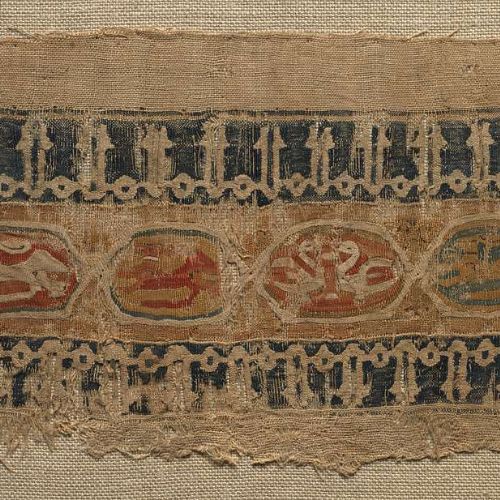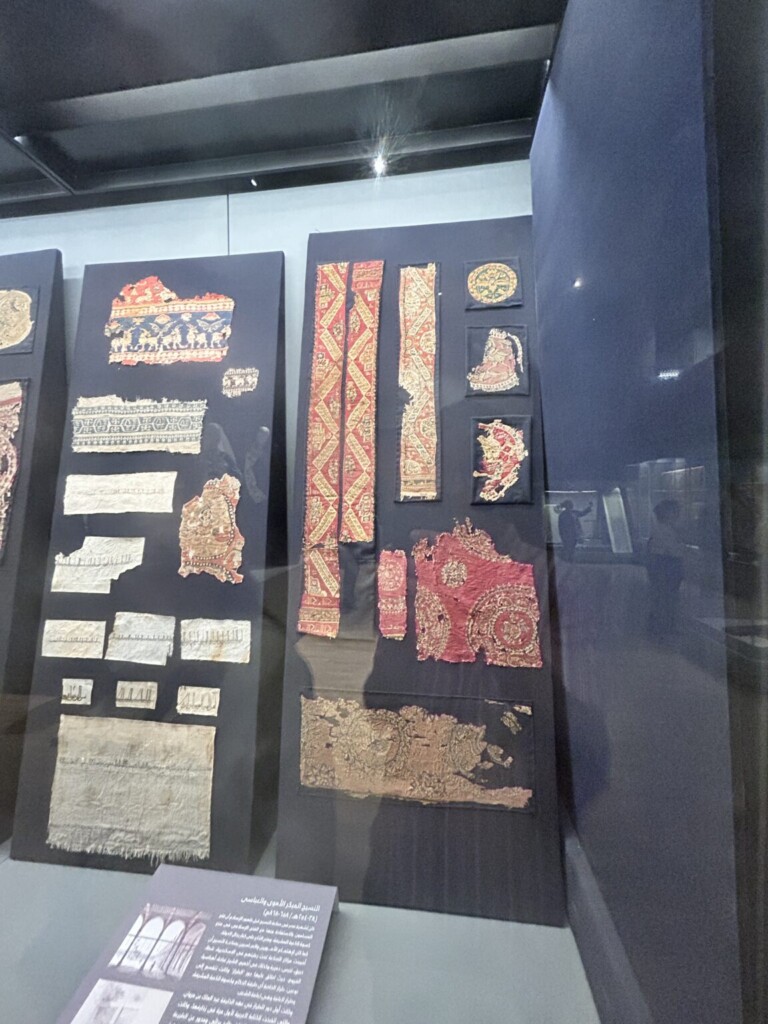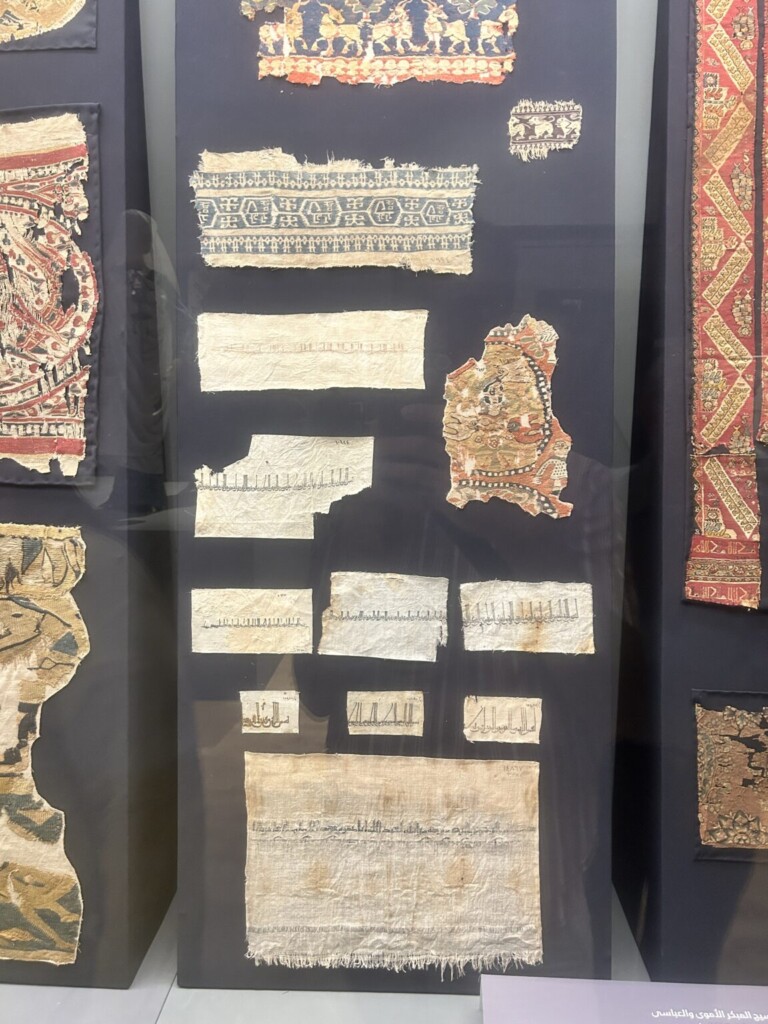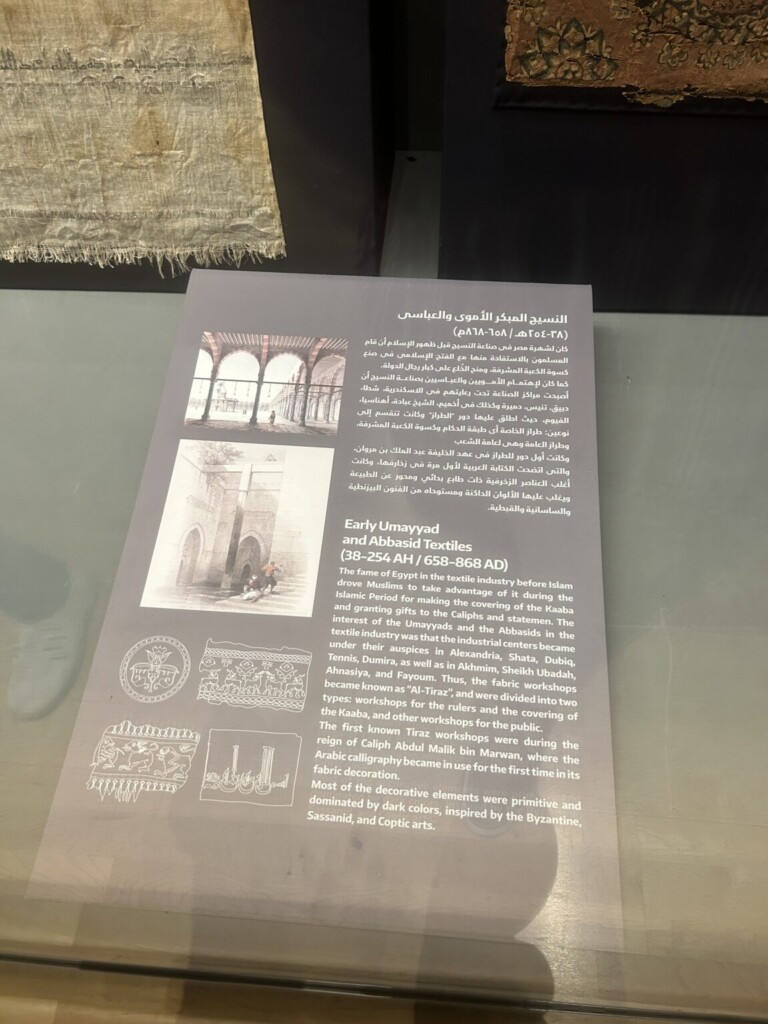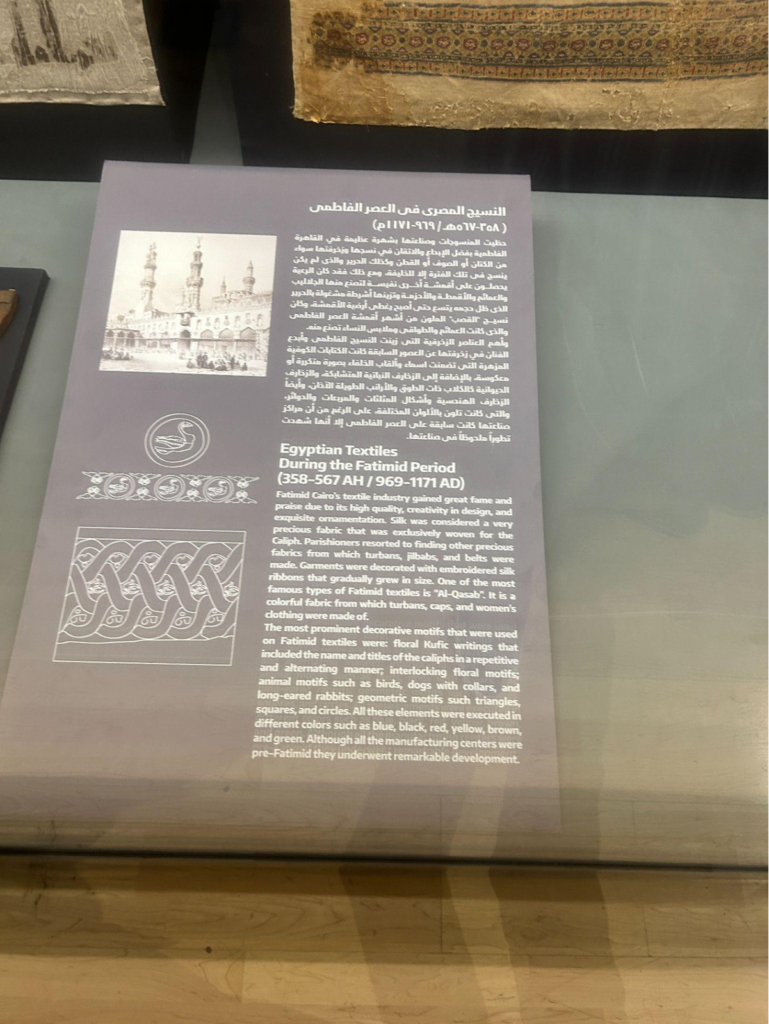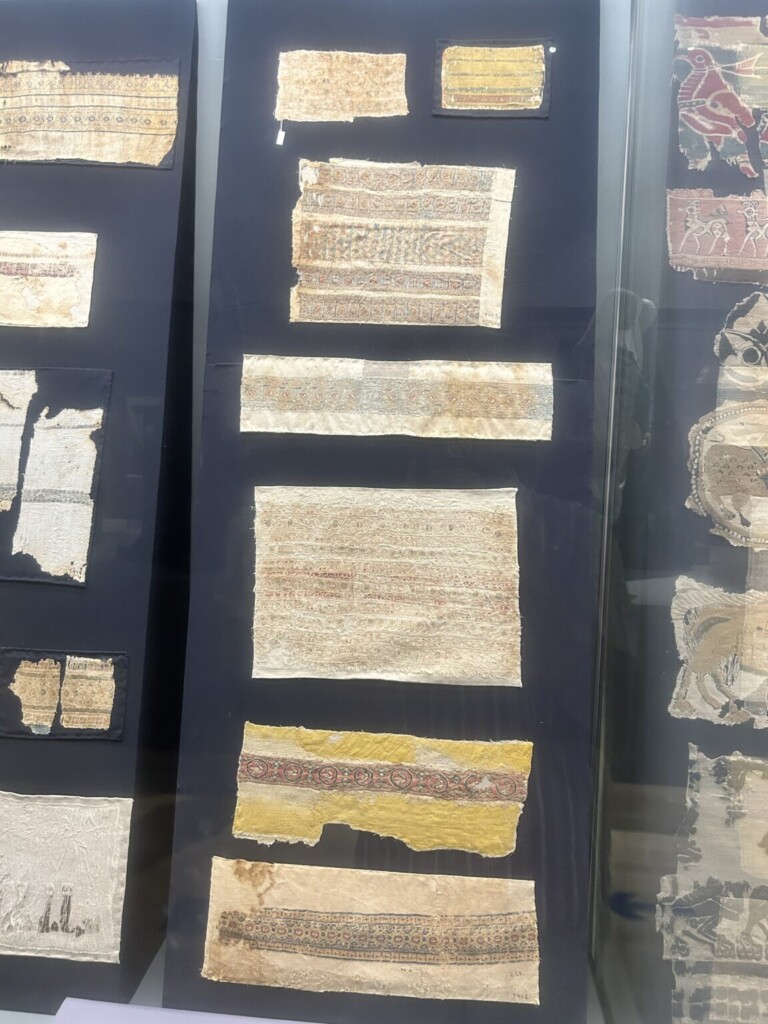In the rich Tapestry of Arab culture, few elements are as visually striking and deeply symbolic as dress. In this blog post, we delve into the first three dynasties that have left an indelible mark on Islamic attire: the Umayyad, Abbasid, and Fatimid dynasties. Each of these periods brought its own unique influences, styles, and social norms that shaped the way people dressed, from the opulent courts to the bustling streets. Our primary guide through this fascinating subject is Yedida Kalfon Stillman’s comprehensive book, “Arab Dress: From the Dawn of Islam to Modern Times.” This seminal work delves into the social and cultural significance of clothing in the Islamic world, tracing its evolution over time and its role in shaping identity and social status. Drawing from a wide array of sources—literary works, historical documents, and archaeological evidence— the book offers a panoramic view of Arab dress, complete with illustrations and photographs.
1: The Umayyad Dynasty (661-750 CE)
1.1 Material and Style
The Umayyad Dynasty, which ruled from 661 to 750 CE, was characterised by the introduction of a more luxurious approach to clothing, especially among the ruling elite in an effort to distinguish themselves from the previous Islamic rulers, the Rashidun. The materials of choice for the upper echelons of society were silk and Brocade. These luxurious fabrics were not just a matter of comfort but also a display of wealth, power, and connections to other influential cultures. However, most of the Arabian garments of early Islamic times continued, although some items became more and more restricted to Bedouin use.
1.2 Headgear
Headgear was an important part of Umayyad fashion, serving both functional and symbolic purposes. The elite often wore distinctive types of headgear, such as the “Qulunsuwah,” a conical cap made of felt or wool, and various styles of turbans. These were not merely fashion statements but also markers of social status and, in some cases, were indicative of the wearer’s role in the court or military.
1.3 Role of Dress in Court Culture
In the Umayyad court, clothing was more than just a basic human necessity; it was a means of displaying power and status. The luxurious materials and intricate designs were a way for the ruling elite to differentiate themselves from the common populace. The court culture was heavily influenced by the imperial cultures of the Byzantines and Sasanians, evident in the art, architecture, and, of course, clothing. This influence was so pervasive that it could be seen in statues, mosaics, and murals adorning the palatial desert retreats, or “badiyas,” of the royal family in Palestine, Jordan, and Syria.
1.4 Cultural Influence
The Umayyad Dynasty was not isolated in its sartorial choices. The dynasty was influenced by neighbouring cultures, most notably the Byzantines and Persians. This exchange was mutual, with the Umayyads not only importing luxurious fabrics but also exporting their own styles and materials, leading to a rich cultural interchange.
1.5 Geographical Scope
The Umayyad Dynasty had a broad geographical reach that included the Arabian Peninsula, Syria, and Iraq. This wide reach also meant that the dynasty was exposed to various cultures and styles, which were then incorporated into the Umayyad way of life. However, despite these external influences, the Umayyads managed to maintain some of the simple outer trappings of traditional Arabian governance, such as consultative councils and public access to the caliph at open assemblies.
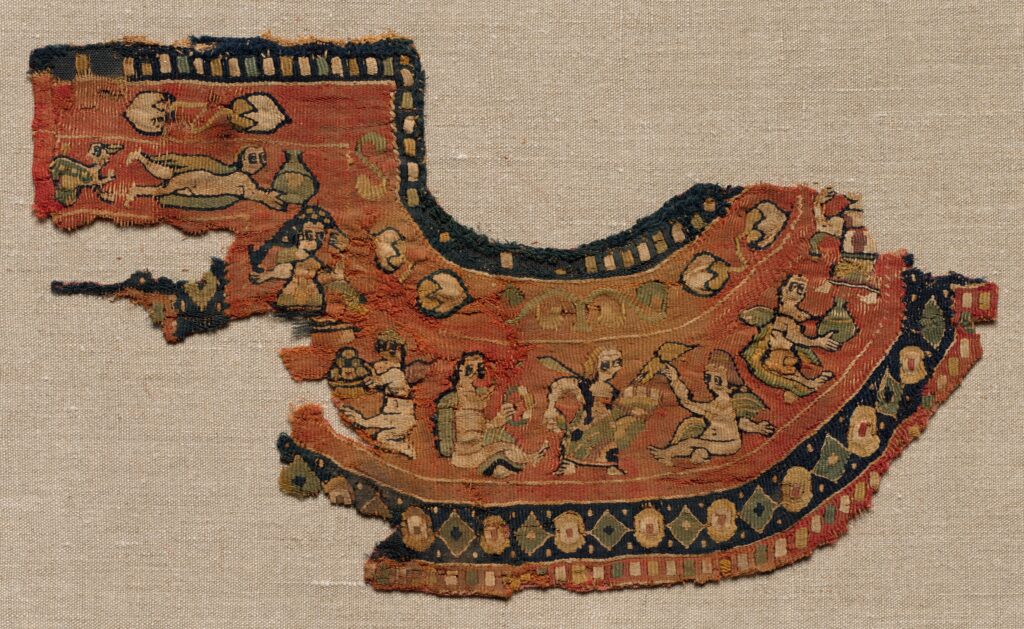
Umayyad period, second half of the 7th century – Fragment, Ornamental Neck Band from a Tunic – 1916.2060 – Cleveland Museum of Art
2: The Abbasid Dynasty (750-1258 CE)
2.1 Material and Style
The Abbasid Dynasty, ruling from 750 to 1258 CE, marked a significant shift in the Islamic world’s approach to dress. While the Umayyads were known for their lavish and extravagant styles, the Abbasids introduced a more refined, austere, and conservative style. The ruling elite continued to wear luxurious clothing, often made of silk or Brocade, but the designs were more intricate and emphasised elegance and refinement. The fabrics frequently incorporated intricate patterns and designs, showcasing the dynasty’s emphasis on sophistication.
2.2 Headgear
The Abbasids wore a type of headgear called a Ghutrah, which was a square of white cotton or linen worn over the head and held in place by a cord of camel hair or wool.
2.3 Role of Dress in Court Culture
In contrast to the Umayyad focus on displaying power and status, Abbasid court culture used dress as a means of portraying piety and humility. The court protocol, partly based on Persian models, became highly refined under the Abbasids. Members of the royal entourage had special “convivial robes of honour,” which included various elaborate garments to be worn on festive occasions.
2.4 Cultural Influence
The Abbasid period was a melting pot of various cultures, including Persian, Turkish, Chinese, and Indian influences. This cosmopolitan atmosphere led to the rapid evolution of a new Islamic fashion that combined elements from these diverse cultures. The shift of the empire’s centre from Syria to Iraq and the founding of Baghdad as the new capital also played a significant role in shaping Abbasid fashion.
2.5 Unique Features
The Abbasid Dynasty was a period of innovation in Islamic fashion. The dynasty saw the rise of non-Arab Muslims (mawali) and the decline of Arab social superiority, which contributed to the development of a new, cosmopolitan Islamic fashion. Persian garments like “Sirwal” and “Qulunsuwah” became widely popular, even influencing the fashion trends in high society.
2.6 Geographical Scope
The Abbasid Dynasty had its centre in Iraq but extended its influence to Iran and Central Asia. This broad geographical scope exposed the dynasty to various cultural influences, which were then incorporated into Abbasid fashion, making it one of the most diverse and cosmopolitan periods in Islamic fashion history.
3: The Fatimid Dynasty (909-1171 CE)
3.1 Material and Style
The Fatimid Dynasty, which ruled from 909 to 1171 CE, was known for its opulence, diversity, and attention to detail in clothing. The ruling elite wore luxurious garments often embellished with gold and silver thread. The materials used were not just a sign of wealth but also a reflection of the dynasty’s patronage of the arts. The fabrics were often dyed in bright, eye-catching colours such as red, green, and gold, adding another layer of extravagance to Fatimid fashion.
3.2 Headgear
Headgear during the Fatimid period was equally elaborate. a distinctive turban known as Taht Al-Hanak, which was wound under the chin. Additionally, an equestrian figure on a Fatimid lustre ware bowl in the Bardo Museum in Tunis is depicted wearing an unusual turban, which may have been worn by members of the imperial retinue.
3.3 Role of Dress in Court Culture
Much like other courts, clothing was a significant aspect of displaying wealth and power in the Fatimid court. The dynasty was known for its love of luxury and patronage of the arts, which was vividly reflected in the clothing styles of the ruling elite. The garments were often large, flowing, and designed to create a sense of movement and elegance, further emphasising the dynasty’s focus on aesthetic beauty.
3.4 Cultural Influence
The Fatimids were of Berber origin and ruled over a diverse population that included Arabs, Berbers, and Andalusians. This diversity was reflected in their clothing, which incorporated elements from these various cultural backgrounds. Unique features like the use of the cloak (Burnus) blend different cultural styles into a harmonious whole.
3.5 Unique Features
Fatimid clothing was often decorated with intricate patterns and designs, such as geometric shapes and calligraphy. These decorative elements were not mere embellishments but were often woven or embroidered directly into the fabric, making each garment a work of art. Women’s clothing, in particular, was made from large pieces of fabric that were creatively wrapped around the body, offering both comfort and elegance.
3.6 Documented Sources
The Fatimid period is unique in that it is well-documented, thanks to the Cairo Geniza manuscripts. These documents offer a wealth of information on the attire of both the bourgeoisie and the working class, providing a more comprehensive view of Fatimid fashion than is available for earlier periods.
3.7 Geographical Scope
The Fatimid Dynasty was primarily centred in Egypt and North Africa. However, its influence spread across the Mediterranean and even into the Middle East, making it a significant player in the fashion trends of the broader Islamic world during its time.
4: Common Themes Across Dynasties
Adoption of Elite Styles by Commoners
One recurring theme across all three dynasties is the influence of elite fashion on the clothing styles of commoners. While the ruling classes in each period had their unique styles, often made from luxurious materials like silk and Brocade, these styles gradually trickled down to the general populace. The Abbasid and Fatimid periods, in particular, saw commoners beginning to adopt some of the styles and fashions of the ruling elite, a phenomenon well-documented in various sources, including the Cairo Geniza manuscripts.
Women’s Attire
Most historical accounts from the Umayyad, Abbasid and Fatimid periods surprisingly focus on the attire of men, especially those in positions of power. However, Stillman points out that there is evidence to suggest that women’s fashion was equally diverse and elaborate, particularly during the Fatimid period. Women’s clothing was often made from large pieces of fabric that were creatively wrapped around the body, offering both comfort and elegance.
Cultural Influences
Each dynasty was influenced by the cultures that surrounded it or those it came into contact with through trade or conquest. The Umayyads were influenced by Byzantine and Persian styles, the Abbasids by Persian, Turkish, Chinese, and Indian cultures, and the Fatimids by Berber and Andalusian traditions. These influences led to a rich Tapestry of styles and materials that made Islamic fashion a melting pot of various cultural elements.
Role of Dress in Social and Political Contexts
Across all dynasties, clothing was not just a utilitarian need but a complex social and political tool. In the Umayyad period, it was a display of power and status; in the Abbasid era, it was a means to show piety and humility; and during the Fatimid rule, it was an expression of wealth, power, and artistic patronage. This shows the multifaceted role of clothing in Islamic history, serving various purposes depending on the social and political climate of the time.
In future posts, we will follow Arab dress across the subsequent dynasties.
